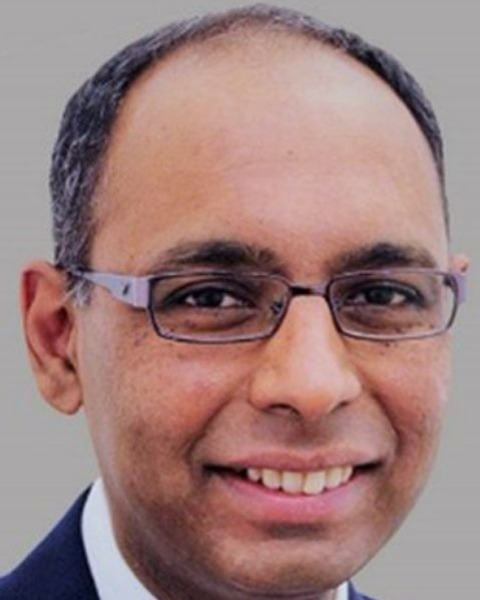QoL and Patient-Reported Outcome and Supportive Care
Poster Session 3
P-479: Disparities in Clinical Trial Enrolment and Survival Outcomes by Socio-economic Class in Multiple Myeloma
Friday, September 29, 2023
1:15 PM - 2:15 PM EEST

Rakesh Popat, MD, PhD
Consultant Haematologist & Associate Professor
University College London Hospitals NHS Foundation Trust
LONDON, England, United Kingdom
Introduction: Disparities in patients enrolled into clinical trials compared to real world populations have been reported with underrepresentation of different racial groups. However socio-economic class may also serve as a cause of inequity, particularly as social deprivation has been associated with overall survival (OS). Adequate sociodemographic representation is required for equitable access and for clinical trials to be informative of the population they serve.
The Aims of the study were to identify the distribution of patients enrolled into Multiple Myeloma (MM) clinical trials according to social deprivation and understand interactions with race, prognostic markers, and OS.
Methods: This was a retrospective analysis of MM patients treated in the UK between 2014-2023 from electronic medical records. Social deprivation was assessed using the English Indices of Multiple Deprivation (IMD) ranking, derived from income, employment, health, education, housing barriers, services, crime, and living environment. Comparator data was obtained from the National Cancer Registration and Analysis Service for England (NCRAS, 2006-2015). OS was estimated using Kaplan Meier Curves and correlative analysis by Cox regression models with GraphPad prism V9.
Results: 580 consecutive patients were grouped by 3 cohorts: standard of care (SOC, n=212), clinical trials (n=355): early phase trials (EPT, Phase I/II, n=103) late phase trials (LPT, Phase II & III, n=252). Median age was 66 years (35-90), M:F ratio was 1.3:1 and had a median of 3 prior lines (0-14). 406 (70%) were White, 80 (13.8%) Black, 40 (6.9%) Asian, 38 (6.6%) Mixed/Other and 16 (2.8%) unknown.
There were significantly less patients enrolled into clinical trials (both EPT and LPT) from deprived areas compared to the expected social demographic of MM patients in England (7% (trials) vs 14% (England) for IMD 5, p= < 0.001). 47.6% (n=169) of enrolled patients were referrals from other centres and were from less deprived areas in England (8% trials vs 14% England for IMD 5, p=0.02). Patients in LPT from more deprived areas had an inferior OS than those from more affluent areas (268 months vs 135 months, p= 0.03).
Non-white patients in trials were from more deprived areas than white patients (25% IMD 1-2, 43% IMD 4-5 vs 58% IND 1-2m 29% IND 4-5, p=0.018). Patients ≥ 75 with worse social deprivation indices had an inferior OS to those from more affluent areas (median 120m vs 268m p=0.01).
Conclusions: Patients enrolled into clinical trials were from less socially deprived areas than expected from the distribution of MM in England with referrals favouring higher socio-economic class. As lower socio-economic class impacts overall survival independently of racial group, it is vital that clinical trials enrol from a diverse but balanced socio-economic population. Enrolment should be monitored according to socioeconomic deprivation to ensure there is adequate representation of the geographical population served.
The Aims of the study were to identify the distribution of patients enrolled into Multiple Myeloma (MM) clinical trials according to social deprivation and understand interactions with race, prognostic markers, and OS.
Methods: This was a retrospective analysis of MM patients treated in the UK between 2014-2023 from electronic medical records. Social deprivation was assessed using the English Indices of Multiple Deprivation (IMD) ranking, derived from income, employment, health, education, housing barriers, services, crime, and living environment. Comparator data was obtained from the National Cancer Registration and Analysis Service for England (NCRAS, 2006-2015). OS was estimated using Kaplan Meier Curves and correlative analysis by Cox regression models with GraphPad prism V9.
Results: 580 consecutive patients were grouped by 3 cohorts: standard of care (SOC, n=212), clinical trials (n=355): early phase trials (EPT, Phase I/II, n=103) late phase trials (LPT, Phase II & III, n=252). Median age was 66 years (35-90), M:F ratio was 1.3:1 and had a median of 3 prior lines (0-14). 406 (70%) were White, 80 (13.8%) Black, 40 (6.9%) Asian, 38 (6.6%) Mixed/Other and 16 (2.8%) unknown.
There were significantly less patients enrolled into clinical trials (both EPT and LPT) from deprived areas compared to the expected social demographic of MM patients in England (7% (trials) vs 14% (England) for IMD 5, p= < 0.001). 47.6% (n=169) of enrolled patients were referrals from other centres and were from less deprived areas in England (8% trials vs 14% England for IMD 5, p=0.02). Patients in LPT from more deprived areas had an inferior OS than those from more affluent areas (268 months vs 135 months, p= 0.03).
Non-white patients in trials were from more deprived areas than white patients (25% IMD 1-2, 43% IMD 4-5 vs 58% IND 1-2m 29% IND 4-5, p=0.018). Patients ≥ 75 with worse social deprivation indices had an inferior OS to those from more affluent areas (median 120m vs 268m p=0.01).
Conclusions: Patients enrolled into clinical trials were from less socially deprived areas than expected from the distribution of MM in England with referrals favouring higher socio-economic class. As lower socio-economic class impacts overall survival independently of racial group, it is vital that clinical trials enrol from a diverse but balanced socio-economic population. Enrolment should be monitored according to socioeconomic deprivation to ensure there is adequate representation of the geographical population served.
